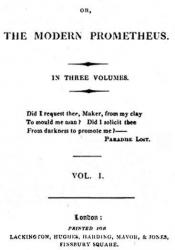Villa Diodati
In the summer of 1816, George Byron (or Lord Byron) rented the Villa Diodati near Lake Geneva in Switzerland. Mary Shelley (Mary Godwin at the time) and Percy Bysshe Shelley also travelled to Geneva at the time. Shortly after both groups arrived, they met each other for the first time. Thanks to a summer full of poor weather, the three spent a lot of time together in Villa Diodati. With a particularly bad storm keeping them inside for a number of days, the group found themselves looking for things to discuss. Byron's physician, John Polidori, provided information on anatomy as Shelley and Byron speculated about the possibility of animation. Mary, who described herself as "a devout but nearly silent listener" during these conversations, no doubt took information from this to craft Frankenstein's monster. The chance for this group of writers to take the desolate attitude of the weather outside and create something out of it came when Byron suggested a contest on who could write the best ghost story. Polidori combined his physician's knowledge with inspiration from Byron's story to create The Vampyre, the basis for modern vampire stories. Mary had a nightmare that night that turned her admission to the contest as the basis for what would become Frankenstein.
https://www.bl.uk/romantics-and-victorians/articles/mary-shelley-frankenstein-and-the-villa-diodati
Parent Map
Coordinates
Longitude: 6.183327400000

